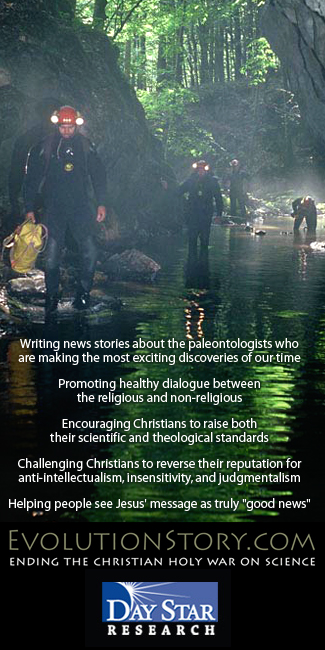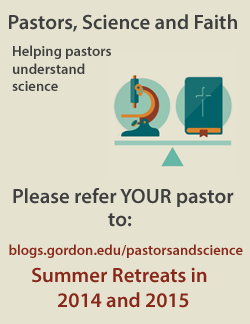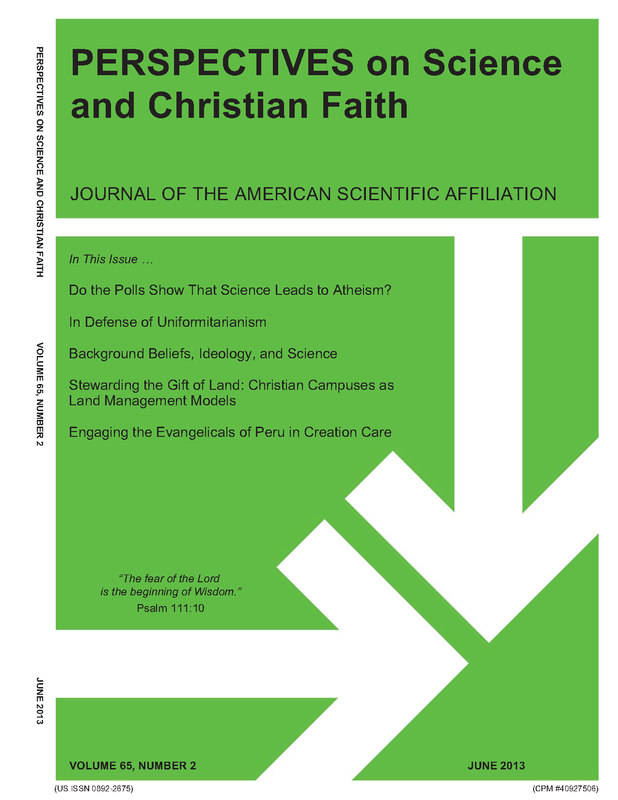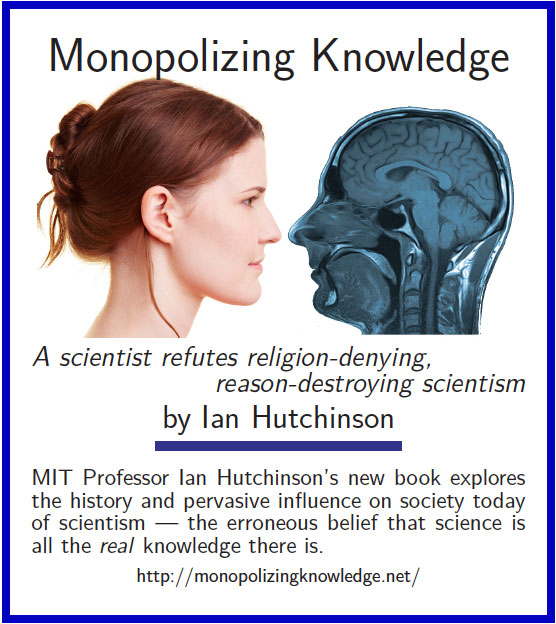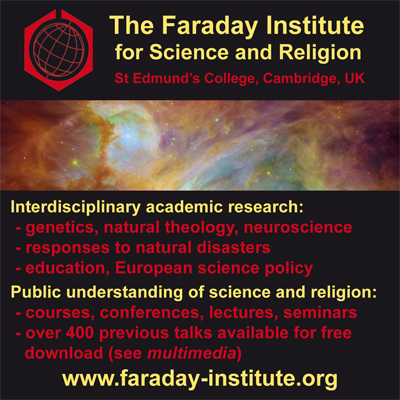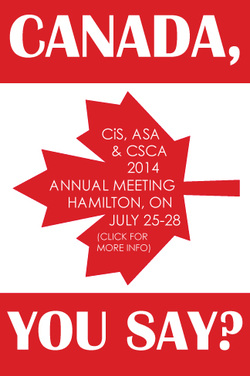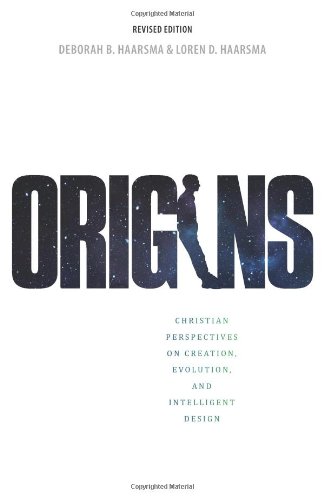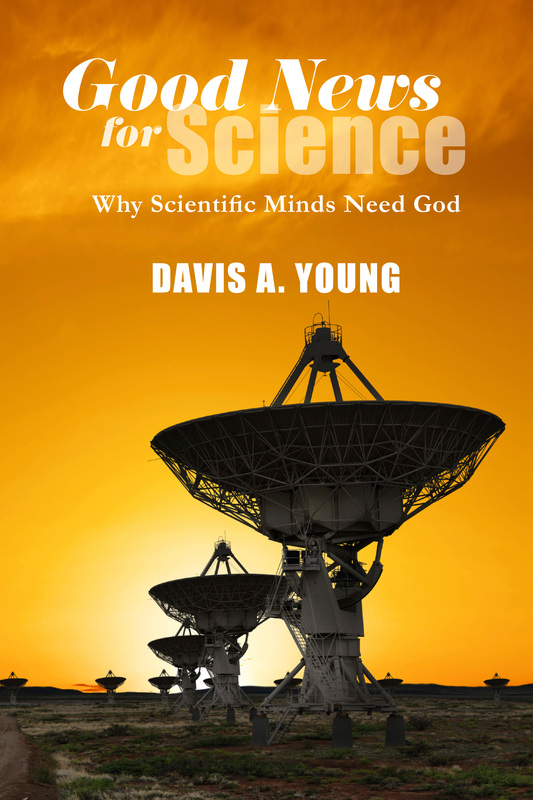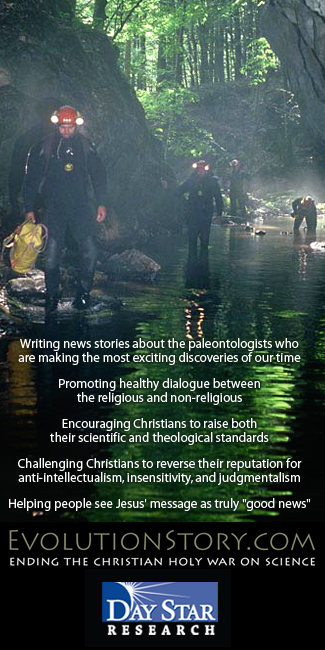Science, Faith and Creativity
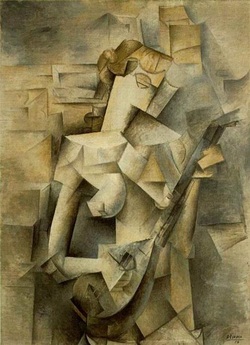 Picasso's "Woman Playing Mandolin"
by Ruth Bancewicz
Scientists are creative people. When I began to work on my blog, Science and Belief, I spoke to a number of Christians working in science about what they thought were the most positive parts of the science-faith dialogue. I had not considered creativity as an important factor in the discussion until I visited the University of Madison-Wisconsin and was introduced to some chemists. Chemistry doesn't throw up any burning issues for science and faith as other subjects do: no great ethical debates, no creation-evolution battles, no arguments about the ‘fine-tuning’ of the universe. I find that scientists who have been drawn into these battles often have ideas about things they would rather talk about. Most speak about beauty, awe and wonder, and that is why I written so much about these topics. When I spoke to a couple of people in the Chemistry department at Madison, however, they both mentioned that they enjoyed the creative process of trying to make sense of things, or solve a problem. It might be a surprise for some to read that scientists exercise creativity in their work, but when you think about it – why not? Creative thinking in science involves making links between things that have previously been unlinked. Nicolaus Copernicus thought it might be simpler to look at planetary orbits from the point of view of the Sun rather than Earth, and caused a revolution in the way we see the universe. A century later, Isaac Newton, sent home from university during an outbreak of bubonic plague, was left to think by himself. He wondered if the planets were affected by the same force as objects on earth, and came up with the concept of gravity. Michael Faraday tried linking the forces of electricity and magnetism in a search for new sources of power, and furthered the understanding of pretty much everything in science, including light, the behaviour of different chemicals, and the movement of anything you can see without needing a microscope. Science is all about discovering these ‘hidden likenesses,’ and so is art[1]. Pablo Picasso got the idea of drawing things using only simple geometric shapes, and invented Cubism. Claude Monet and his friends started painting everyday scenes in a particular style, and started the Impressionist movement. Technology fits this category too. A person of true genius tried attaching wheels to the short side of the suitcase, and one of our greatest transport problems was solved. When looking for the root of creativity, lateral thinking is a good place to start. Of course there are differences between scientific research and other more overtly creative activities. Scientific output itself is not an art form. A scientist simply discovers things that are already there, though their presentation of the data might be pretty. Both science and art stem from careful observation of the world, and 'a desire to see beyond the seen', but the theories they produce are completely different. Science is about explaining the laws underlying the universe, while art is a more subjective and metaphorical expression of what is discovered[2]. The biologist E.O. Wilson said that both science and literature start with a story, but while science must say something that fits the data, literature uses 'lies' to say things that are true.[3] Take the use of metaphor, for example. Science uses metaphor sparingly, and in a rather obvious way. There's a protein (imaginatively named p53) that is very important in protecting the integrity of DNA, so it is called a 'guardian of the genome'. Biologists also use the metaphor of a river to talk about the DNA code: if you are looking at a long section of DNA code laid out in a certain way, the left hand side is 'upstream', and the right is 'downstream'. In the literary world, on the other hand, metaphor is used more widely – and the message is often more opaque. The stylized form of poetry gives a hint of something deeper in the words chosen. Most schoolchildren could figure out the meaning of Robert Frost’s ‘The Road Not Taken’, but that’s not always the case – sometimes we are left musing or puzzled, trying to understand the poet’s mind. Prose writers also use metaphor, and sometimes in an equally subtle way, so you could read a whole novel without picking up on some of its intended meaning. Are the lifeboat interactions of The Life of Pi a metaphorical exploration of questions about God, or the different levels in Indian society, or...? The creativity of both art and science is real, if expressed in different ways. The Bible describes how God created us 'in his own image,' brought us into relationship with himself and gave us responsibility to care for creation. It's not too much of a stretch to assume that our creative drive is part of what it means to be made in the image of God. As Dorothy Sayers said, 'The characteristic common to God and to man is apparently that: the desire and the ability to make things.'[4] O course we create in a different way to God: we don’t make things out of nothing, but are inspired by and use materials from what we see around us. A scientific friend recently said that it’s hard for her to compare our creativity to God's because the extent of that creativity is so different. There's so much variety and diversity in what God has made that it’s difficult not to be bowled over by it. She agrees, though, that our creativity must be something to do with being made in his image. The desire to understand and look for new things is part of what makes us human. Creativity is not correlated to the much-contested score of mathematical and linguistic ability, spatial awareness and memory that is IQ. It also seems that one does not inherit creativity, at least not biologically. What we do know is that creativity can be nurtured. Children who are encouraged to be creative are more likely to be creative as adults, adults are more likely to be creative in certain environments, and the people around us are a vital source of inspiration.[5] Susan Hackwood was a department head in the famously creative Bell Laboratories, the US telecommunications industry research lab that produced seven Nobel Prizes, and she is now a professor of electrical engineering at the University of California. She has taken a professional interest in the cultivation of creativity, and has contributed to the recent book, Exceptional Creativity (Ed. Andrew Robinson, Templeton Press, 2013). Her research has revealed two personality traits and two abilities that must be encouraged in order for creativity to flourish. The first creative trait is generating ideas – not just having ideas, which is something everyone does to some extent, but being uninhibited in voicing them. The second trait is 'autonomous personal vision.' Truth, goodness and beauty: everyone's definition may vary a bit, but the values are there and they drive what we do. The abilities that contribute to creativity are a readiness to master new knowledge and skills, and being able to sustain intense focused effort towards a goal. So how can one nurture these gifts? The opportunity to learn and develop self-discipline is important, but one also needs a good dose of freedom. Creativity grows in environments where conformism is not valued too highly. Obviously there is a balance to be found between behaving in a moral way and being a pleasant person to be with, and conforming rigidly to existing ways of doing things. I have found Hackwood’s analysis of creativity very helpful in all sorts of ways – particularly when it comes to thinking about one’s own creativity – or lack of it – in certain areas. Technology can help creativity to flourish: one only need think of a kid with a digital camera, a designer with a wide screen computer, or an academic with a laptop full of notes and journal articles. But time away from gadgets – or ‘that pokey flashy thing,’ as a scientific friend’s husband calls her tablet – can also help creativity. My friend told me how she was recently stranded all day in an unfamiliar clinic with no internet connection, hoping (in vain) to meet patients who were eligible for a clinical study. At first she was intensely frustrated because she couldn’t answer emails or do something ‘constructive,’ but boredom soon turned to creativity. She spent some time thinking about her research, and by the end of the day had come up with a good idea for a new project. Being free from distractions does seem to be important in creativity, and never being bored is not always a good thing. I am a firm believer in mobile technology and the paper free office, but a movement is growing in the world of technology, education and creative thinkers to encourage us to switch our gadgets off every now and again.[6] There is evidence[7] that if we let our minds wander in the queue at the supermarket instead of answering emails we are more likely to come up with good ideas later. If we allow our thoughts to drift on the morning commute or while we fold laundry instead of listening to a podcast, we might well come up with more creative solutions to problems at work. The comedian John Cleese describes this approach as making ‘a tortoise enclosure for your mind.’ It might involve sacrifices like switching off the phone for a couple of hours, shutting down your email, or turning off the car radio, but it's worth it. Creativity is a shy animal that takes its time to come out of its shell and get to work, so every now and then we need to make ourselves a calm oasis for uninterrupted thinking. I know that a certain environment and schedule can help me to be creative, but I’m not sure how the process actually comes about. I like to work by a window overlooking a green space (who wouldn’t?), but does what I see outside directly feed into my work? I can write a blog post, plant my garden in a certain way, or come up with an idea for a new project, but I could never give a precise explanation of where any of my ideas came from. Did they arise in my brain? Were they triggered by outside stimuli? Was it important that I was encouraged to do certain things as a child? ‘Come up with’ is particularly vague. All our words that describe the activity of generating ideas and making new things suggest a kind of conjuring up from nowhere. The word ‘create’ stems from the idea of God creating ‘ex nihilo’ (out of nothing), which is a paradox when applied to humans because we are completely incapable of making anything out of nothing. So when we talk about where our ideas come from, we tend to use world like ‘intuition’ or ‘inspiration’[8], as if originality can only come from outside ourselves. I think it does, and I think there's also a spiritual component to it. When I started working on this topic, I wasn’t sure how many people would share my view on the importance of creativity in science. So I approached Dr. Ruth Hogg, a biologist from Northern Ireland, to find out what she thought. I first met Ruth when she was living in Cambridge. She had trained as an optometrist, and decided to focus on research rather than purely clinical work. After a PhD in Belfast and a couple of years postdoctoral research in Melbourne, she joined the Vision Laboratory at the University of Cambridge. She was also a founding member of the Cambridge Veritas Forum, running events to help students and faculty ‘engage in discussions about life's hardest questions and the relevance of Jesus Christ to all of life.’[9] When I next contacted Ruth she was lecturing and running her own research group at Queens University in Belfast. The first thing I discovered on talking to Ruth is that she is a very accomplished pianist. In her mid teens she wanted to be a musician, but eventually settled on science instead. She now works on age-related macular degeneration, which is the biggest cause of blindness in the older generation. The macula is the most sensitive part of the eye and is responsible for most of our vision, especially detailed work like reading. Ruth and her colleagues are looking at the different factors that affect whether a person will develop macular degeneration later in life, and particularly those that are inherited. One of the delights of Ruth’s work is to make beautifully detailed images of the eye. The back of the eye – the retina – where the macula is located is a highly complex structure composed of different layers of nerve cells. Many eye clinics now use Optical Coherence Tomography (OCT), a non-invasive technique using near-infrared light to create three-dimensional cross-sections of the retina. Looking at these pictures, it’s easy for Ruth to appreciate how the structure of the eye fits its function, and how precise our vision can be despite all the potential problems. Ruth is a creative person, so she is comfortable with the concept of creativity in science. She enjoys developing new ideas and trying things out, particularly now that she has a team of people to help her. Her theory is that scientists often have a short attention span, and that’s not a bad thing because having a constant flow of new projects is very healthy for a research group. When I asked Ruth about creativity among her colleagues, she said that she has always been amazed by the number of scientists she meets who are accomplished musicians, artists or something else quite overtly 'creative' – and not just as a hobby, they are really quite expert. So scientists are obviously not just creative in their work. Also, as a pianist she has been always been able to appreciate both the creativity and the discipline required to do science. Anybody who has learned an instrument will know that although there is creativity within music, it also involves working within a certain structure, particularly for classical musicians. You need to understand harmony and all the other aspects of music theory before you can take it to a different level and start doing original things. It's very much the same in science: everyone is working within the same scientific method, but to do something new and exciting you really need to work creatively. The entry requirement for scientific researchers is the achievement of a PhD, and to earn a PhD you need to produce something novel within your field of research. So every scientist has to be able to produce something original before they can be part of the world of science. I compared the scientific lifestyle with more overtly creative artistic professions, and Ruth said there was 'probably a closer relationship [between the two] than the general public would realize.' Once you’re leading a lab, a large part of your time is spent trying to think up new ideas. You’ve got to know where the field is going and how you can contribute to it. You have to be quite innovative to find ways to fund your research, and that can be a good thing because it makes you broaden your horizons and think a bit more widely. Teaching students and trying to get the best out of them requires a kind of creativity as well. It’s also quite a chaotic life: it’s not a nine to five job and involves a massive amount of variety. It’s a very difficult job much of the time but there’s a level of freedom, even for PhD students, that isn’t available in a lot of careers. For Ruth, that is one of the real advantages of science. My last question to Ruth was about how her creativity related to her faith. She was very comfortable with being creative in science, but hadn’t thought about it so much in relation to her faith. For those from a fairly conservative Protestant background there can be an initial fear of creativity because it might be about ‘making things up,’ and end up in making theological mistakes. The reality is that there is already huge creativity in the church, particularly in worship music and other art forms. How can this creativity be expressed by a scientist like Ruth? Learning to articulate the interaction between faith and science is certainly a creative process. For someone with a deeply enquiring mind, this a constant learning process. Ruth described how her understanding of her faith is constantly being recalibrated as she experiences new situations and sees how other people live out their beliefs. My theologically trained colleagues tell me that the Hebrew Scriptures are very concrete in their use of language. It's not surprising, then, that a rather abstract concept like creativity never appears in the Bible. The creativity of God, however, is a strong theme running behind the whole text. There are images of God creating like an artist or craftsman, and one of the most famous is a beautifully poetic passage in the book of Proverbs. Wisdom is such an important part of God's character that it is personified in Proverbs, and in Proverbs 8 wisdom is said to have been like a master craftsman (or workman) at God's side as he created the universe. Jesus is the Son of God and reflects God’s character perfectly, so we should expect to see creativity in his life. He was a carpenter's son, and in those days a boy learned his father’s trade so there’s no reason to doubt that he learned to make things out of wood. Jesus' began his ministry as a travelling teacher when he was around thirty, so he must have been a fairly proficient craftsman by then. We don’t read in the Bible, ‘Jesus fixed the table, and then they all sat down to the Passover meal,’ but it may have happened. Jesus was also creative in another way, and that was in his storytelling. The parables and other pictures that he used to illustrate his points are beautiful, and intensely challenging. The flowers that grow in a field and die in a few days are more beautifully dressed than the king, so if God made us as well as the flowers, will he not also give us what we need? God’s kingdom is like yeast in bread: you can’t always see it but it changes everything. A respected religious leader ignores an injured man on a dangerous road, but a Samaritan – a hated cult member – goes out of his way to help him. Every teacher would love to be able to give such memorable lessons[10]. The Bible describes two ways in which God creates: making and doing. 'The creation story is all about God making things and making them out of nothing. One could say the rest of the Bible is God’s creative act of doing...' [11] I do want to be careful, though, not to give the impression that God's making was over in an instant. The origin of the universe, our planet and everything that lives on it was not a one off event – it's an ongoing process. The Bible describes how God is constantly active in creation: he feeds the lions, makes the wind, and causes the sun to rise. We know how these processes work, but without God's sustaining power nothing would happen – rather like turning off the power supply to the TV. So God's making and doing are both continuous processes. Part of God's ongoing creation is in his interaction with people, making new things possible for individuals and societies. In the time before Jesus came, God revealed himself through prophets, miracles and his 'law.' When people worshipped and prayed to him he also revealed himself to them. King David described the effect that knowing God had on his life when he wrote Psalm 51 after he had committed a terrible crime, saying ‘Create in me a pure heart, O God, and renew a steadfast spirit within me. Do not cast me from your presence or take your Holy Spirit from me. Restore to me the joy of your salvation and grant me a willing spirit, to sustain me.’ A little more than two thousand years ago, God created something new by sending his Son, who through his teaching, death and resurrection brought together an eclectic group of people who were the first Christian community. Father, Son and Spirit choose to work through the church to create new things: people living life to the full, learning to use freedom wisely and tackling poverty, disease and injustice through generosity, education and technology. So God has revealed himself as a creative being, but what we don't know is exactly how God’s creativity operates. The most we could do is to extrapolate back from our own experience of creativity, but that is unlikely to be fruitful and might actually be harmful to our theology. Creating God in our image never was a terribly good idea. I am content to know that God creates and therefore is in some way creative. What I can do is try to understand more about the things he created. God has written two books. The first is the biblical record of his interaction with people, and the other is the Universe he created. God’s creativity is evident in both, and studying them is awe-inspiring. And you don't need to be a person of faith to find inspiration in nature – artists have been doing that since the dawn of time, when paints were earth colours and the canvas was a cave wall. [1] Jacob Bronowski, Science and Human Values (London: Faber and Faber, 2008 - first published 1956), 1-30
[2] John D. Barrow, The Artful Universe: The Cosmic Source of Human Creativity, (Oxford: Oxford University Press, 2005), vii-5 [3] E.O. Wilson, "On the Origin of the Arts", in Harvard Magazine (May-June 2012), 32-37. (Reproduced from his book, 'The Social Conquest of Earth') [4] Dorothy Sayers, The Mind of the Maker (London: Methuen, 1942), 17-24 is that pages for the whole chapter? [5] Susan Hackwood, "Technically Creative Environments", in Exceptional Creativity in Science and Technology: Individuals, Institutions and Innovations, Ed. Andrew Robinson (Philadelphia: Templeton Press, 2013), 145-161 [6] http://readwrite.com/2013/03/29/the-iphone-killed-my-creativity; http://www.inc.com/jessica-stillman/is-your-smart-phone-killing-your-creativity.html; http://www.nytimes.com/2012/07/24/technology/silicon-valley-worries-about-addiction-to-devices.html?; http://www.nytimes.com/2012/12/01/your-money/why-its-not-all-bad-to-be-bored.html?; http://www.fastcompany.com/1829462/want-be-more-creative-get-bored [7] http://www.scienceomega.com/article/763/the-benefits-of-boredom; http://www.bbc.co.uk/news/education-21895704; Teresa Belton & Esther Priyadharshini, "Boredom and schooling: a crossdisciplinary exploration" in Cambridge Journal of Education 37 (2007), 579–595; Benjamin Baird et al., "Inspired by distraction: mind wandering facilitates creative incubation" in Psychological Science 23 (2012),1117-22 [8] Margaret Boden, "Précis of The Creative Mind: Myths and Mechanisms", in Behavioural and Brain Sciences 17 (1994), 519-570 [9] http://www.veritasforum.eu/home.html [10] Luci Shaw, Breath for the Bones. Art, Imagination and Spirit: Reflections on Creativity and Faith (Nashville: Thomas Nelson, 2007), 3-18 [11] Mark Bozzuti-Jones, In God's Image: A Theology of Creativity, April 16, 2009, http://www.trinitywallstreet.org/news/articles/in-gods-image-a-theology-of-creativity |



